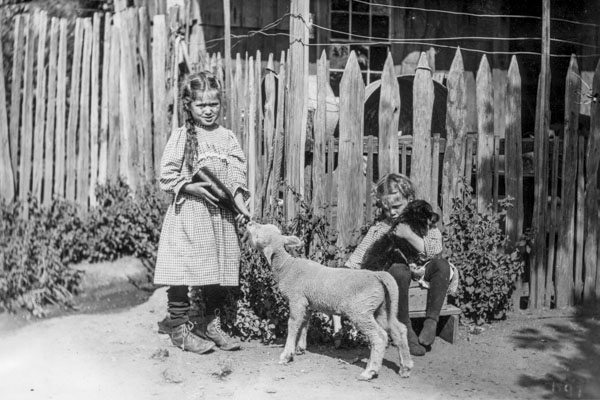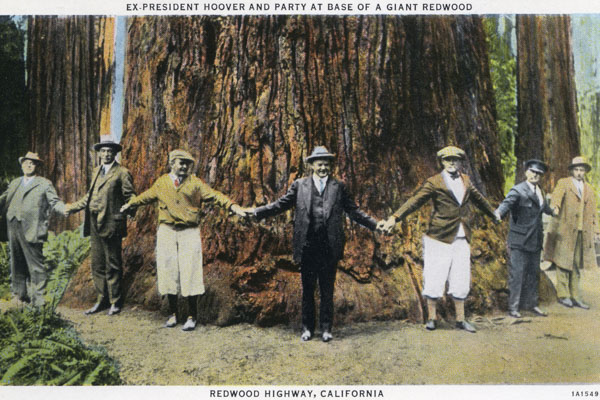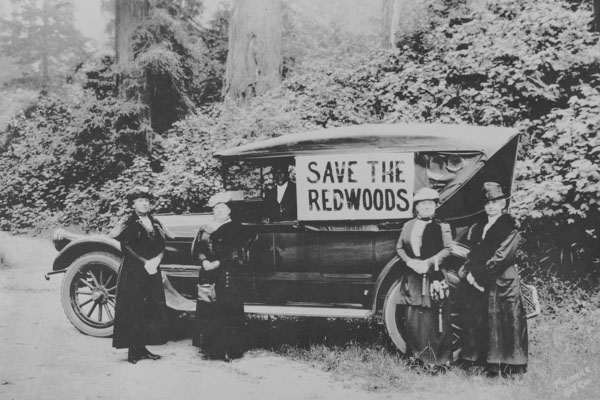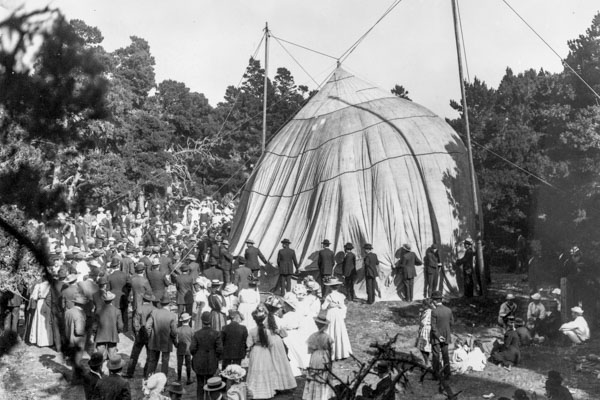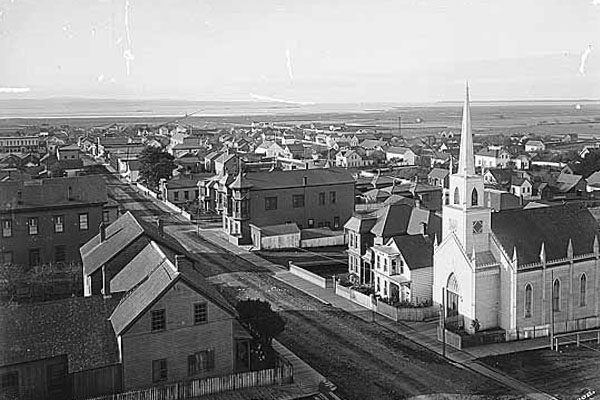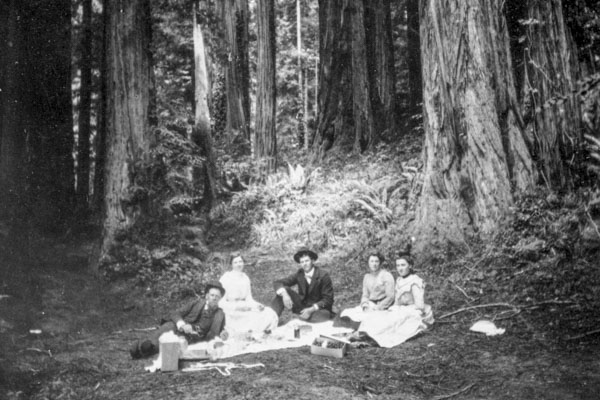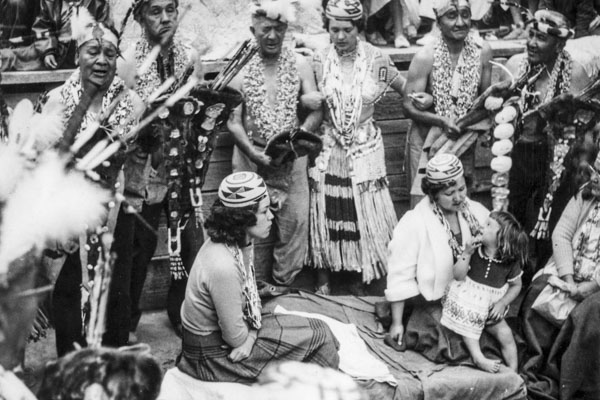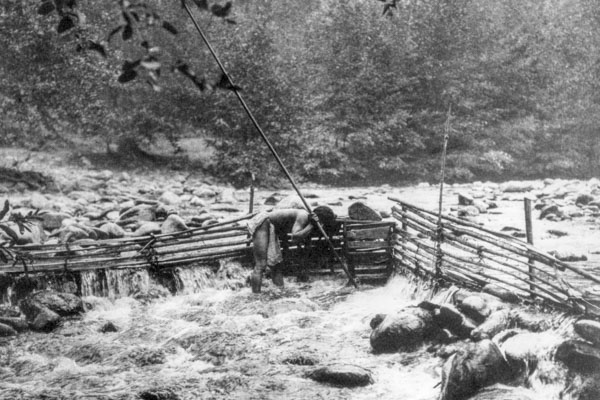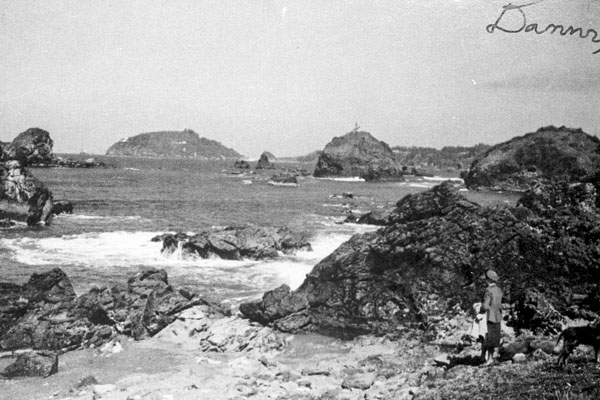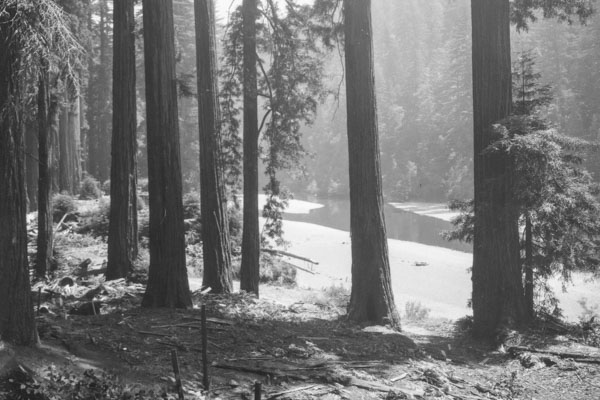You are here
Internship Reflection - Anne Howard
Anne’s Write-up
Anne Howard (MA in English, 2022) built a unique internship during the Spring 2022 semester that bridged working at the library with working in the community. The internship included time spent at the Cal Poly Humboldt Special Collections and Digital Media Lab as well as the Clarke Historical Museum, working in partnership with the Humboldt Asians and Pacific Islanders in Solidarity (HAPI) and the Eureka Chinatown Project (ECP).
Three projects were completed as a result of the bridging between these communities: a research guide for Eureka’s Historic Chinatown that includes digitized items from the ‘Chinese in Humboldt’ pamphlet file and an accompanying finding aid, a 360 virtual tour of the Clarke Historical Museum, and a 360 virtual tour of Eureka’s Historic Chinatown.
These projects helped to create a bridge from the past to the present, and produce more opportunities for the Humboldt community and beyond to learn about Eureka Chinatown. From digitized newspaper articles to a VR experience, the importance of sharing the historical contexts that shape our world today cannot be overlooked. Anne hopes that this project will support current and future students, researchers and activists.
Anne was looking for a way to learn some new skills and connect with the community. Having no experience in Special Collections or Digital Media, the learning curve was steep. However, the result was greater than could’ve been imagined, and it has been a wonderful experience. With the skills learned in the Digital Media Lab, Anne even incorporated a 360 video into her thesis project.
Anne's thesis project research is on developing reading strategies by applying critical cartography methods and counter-mapping theories to literature and literary analysis. She credits this internship with the experience of listening, learning, and witnessing the strength of community collaboration.
The research guide was compiled with the assistance of Archivist and Digital Publishing Specialist Sarah Godlin. Anne digitized over 50 items from the pamphlet file related to Eureka's Historic Chinatown and the Chinese residents of Humboldt County. She then organized them according to year, ranging from 1860 to 2017 (with a handful of undated items) and created a detailed finding aid with citations.
https://specialcollections.humboldt.edu/aiding-eureka-chinatown-research
The 360 virtual tour photos and video of the Clarke Historical Museum were created with the technology and support of the Digital Media Lab and Learning Librarian Tim Miller. The video tour included original music provided by Aaron Laughlin. It was shot with a GoPro 360 MAX camera and edited with Adobe Premiere Pro. The 360 photos of the Clarke reached thousands of views on Google Maps within weeks of posting!
The 360 virtual tour of the Eureka Chinatown was produced with the help of Tim Miller and with the research and existing walking tour resources of Katie Buesch, the Clarke Historical Museum, HAPI and ECP. Guidance, supervision and support was provided by Vicki Ozaki, Sheri Woo and Brieanne Mirjah-D’Souza. The narration for the video was done by Katie as well as Dave Young Kim. It was shot with a GoPro 360 MAX and produced and edited using Audacity and Adobe Premiere Pro. The 18 minute tour can be enjoyed by students, researchers, historians and community members in Eureka and around the world.
Things that went well
Asking a generous colleague to write original music was a great way to avoid having to use a licensed song for the Clarke tour video.
Writing a script to follow for the Chinatown virtual tour was helpful for the recording process and for adding in accurate subtitles on YouTube later.
Working one day at the Cal Poly Humboldt library and one day at the Clarke Museum provided a variety of perspectives and hands-on experiences.
Setting up regular meetings to check in with HAPI and ECP was very helpful.
Things to consider
360 video editing can be very time consuming.
Consider the way most people will enjoy the video when editing -- i.e. will they use YouTube on a desktop or their phone or a VR system? Knowing this will help you to make editing decisions.
File storage and sharing can get tricky when working with several community groups. Stay organized from the beginning, and consider hard drive formatting settings in advance.
Links to check out
Eureka Chinatown Project
"The Eureka Chinatown Project is an initiative by community members and Humboldt Asians & Pacific Islanders in Solidarity (HAPI) to honor the history and culture of the first Chinese people in Humboldt County, California."
Humboldt Asians & Pacific Islanders in Solidarity (HAPI)
"The purpose of Humboldt Asians & Pacific Islanders in Solidarity (HAPI) is to build and empower our community by amplifying, supporting, and encouraging diverse voices and perspectives to foster a more engaged and inclusive community."
Clarke Historical Museum
"The mission of the Clarke Historical Museum is to celebrate the rich and varied history of Northwestern California by preserving, sharing, and interpreting that history in ways that increase knowledge, enrich the spirit, engage the mind, and stimulate the imagination."
Tips & Tutorials
Adobe Premiere Pro: Edit 360/VR video
Adobe video tutorial with free sample 360-degree video files.
How To Add Text To 360 Video Premiere Pro Tutorial
YouTube video tutorial from Best 360.
How to Rotate the View in a 360 Video | Premiere Pro
YouTube video tutorial from Yeager Film.
Thank You Note
Anne’s project exemplifies the Cal Poly Humboldt’s goals of valuing place-based teaching, learning and scholarship and taking that work outside the classroom and University and into our communities. Her project is ambitious – partnering with three community organizations: Eureka Chinatown Project, Humboldt Asians & Pacific Islanders in Solidarity (HAPI), and the Clarke Historical Museum. It also bridges two seemingly disparate priorities: providing public access to local archival materials and innovative storytelling through virtual reality (VR).
By creating the 360-video tour of Eureka’s historic Chinatown, Anne has created new opportunities for the campus and local community to learn about the history of this area. The virtual tour opens access to Chinatown to people outside the area as well as to people unable to participate in the Clarke Museum’s walking tours. Her research guide provides access to digital archives and current articles and resources about the Eureka Chinatown Project and other efforts to commemorate this historic area.
Thanks to donor support, Anne has been able to make history come alive and highlight this important chapter in the history of our local community. Without such support, these types of projects are not possible. Being able to compensate students for their time on these ambitious projects helps to ensure their success not only in the project but in their overall academic success and professional development. Student internships and employment opportunities offer ways for students to pay for college, keep loan debts down, and help ensure retention.
